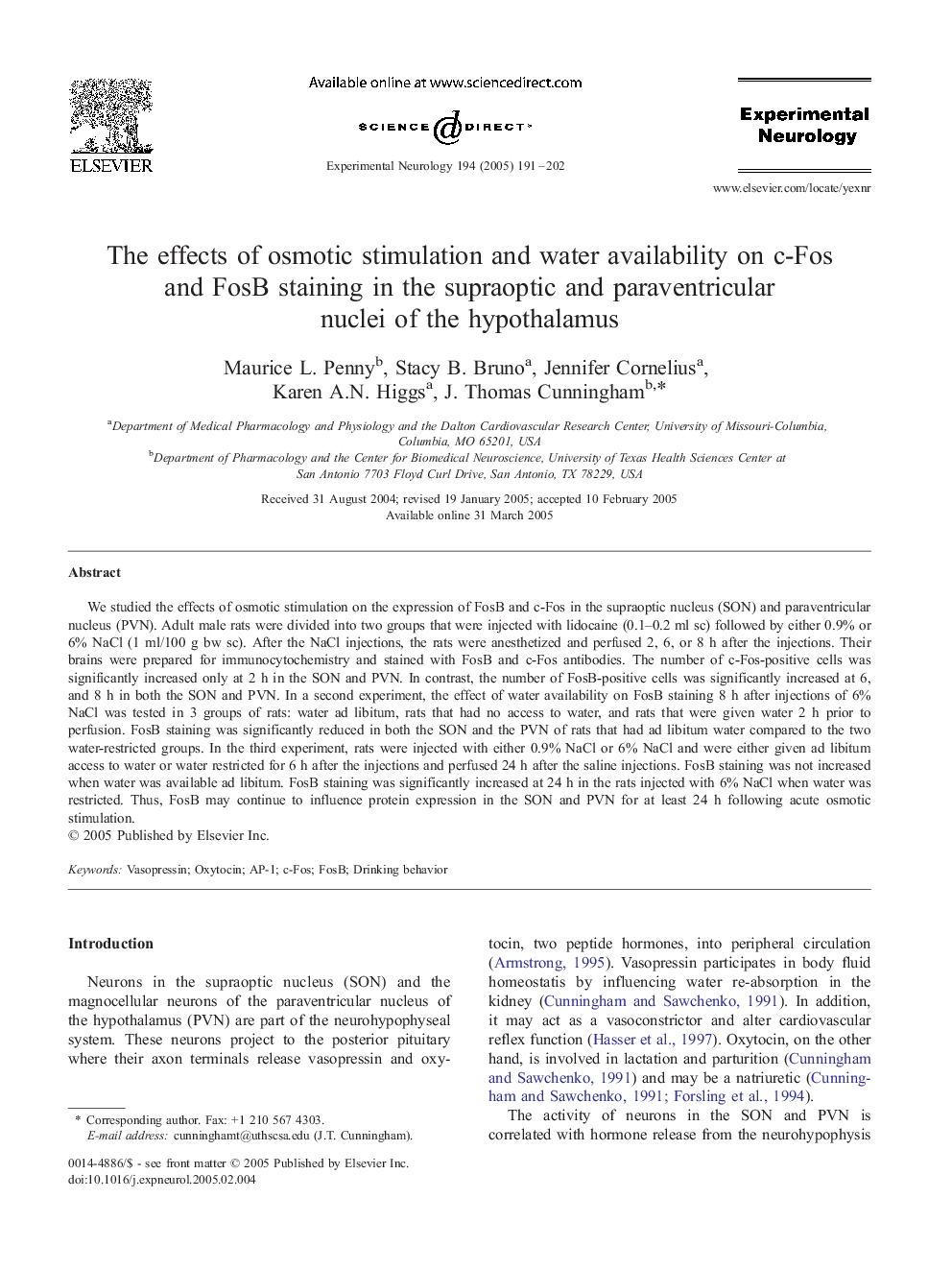| Article ID | Journal | Published Year | Pages | File Type |
|---|---|---|---|---|
| 9191972 | Experimental Neurology | 2005 | 12 Pages |
Abstract
We studied the effects of osmotic stimulation on the expression of FosB and c-Fos in the supraoptic nucleus (SON) and paraventricular nucleus (PVN). Adult male rats were divided into two groups that were injected with lidocaine (0.1-0.2 ml sc) followed by either 0.9% or 6% NaCl (1 ml/100 g bw sc). After the NaCl injections, the rats were anesthetized and perfused 2, 6, or 8 h after the injections. Their brains were prepared for immunocytochemistry and stained with FosB and c-Fos antibodies. The number of c-Fos-positive cells was significantly increased only at 2 h in the SON and PVN. In contrast, the number of FosB-positive cells was significantly increased at 6, and 8 h in both the SON and PVN. In a second experiment, the effect of water availability on FosB staining 8 h after injections of 6% NaCl was tested in 3 groups of rats: water ad libitum, rats that had no access to water, and rats that were given water 2 h prior to perfusion. FosB staining was significantly reduced in both the SON and the PVN of rats that had ad libitum water compared to the two water-restricted groups. In the third experiment, rats were injected with either 0.9% NaCl or 6% NaCl and were either given ad libitum access to water or water restricted for 6 h after the injections and perfused 24 h after the saline injections. FosB staining was not increased when water was available ad libitum. FosB staining was significantly increased at 24 h in the rats injected with 6% NaCl when water was restricted. Thus, FosB may continue to influence protein expression in the SON and PVN for at least 24 h following acute osmotic stimulation.
Related Topics
Life Sciences
Neuroscience
Neurology
Authors
Maurice L. Penny, Stacy B. Bruno, Jennifer Cornelius, Karen A.N. Higgs, J. Thomas Cunningham,
